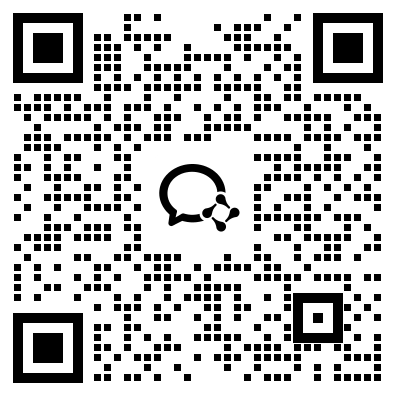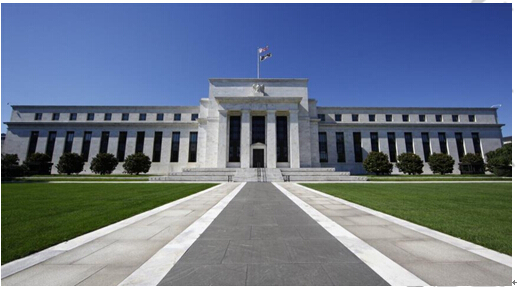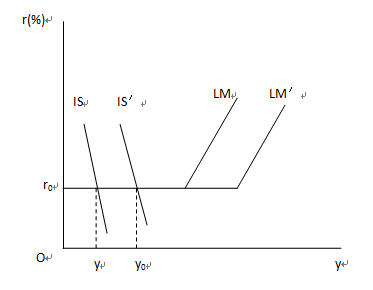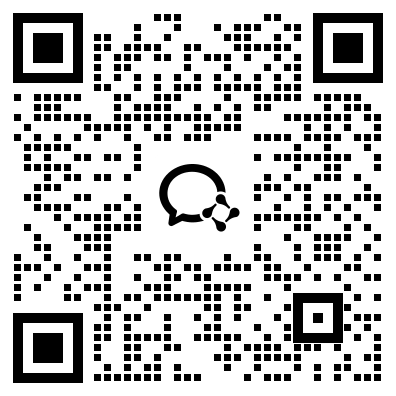特惠-26考研冲刺
特惠-27考研课
双证-在职硕士
免联考-同等学力
26考研-肖八笔记
26考研-时政刷题
26考研-作文押题
26考研-全套真题
26考研-提前估分
保研-路线图
27考研-智能择校
27考研-英语测评
27考研-新大纲对比
热门-计算机择校

扫码加入训练营
牢记核心词
学习得礼盒
美联储(到底是什么性质的):

一、最近有一本书说美联储是私人性质的。这种说法是不准确的。在美联储的网站上有这样两段话(摘自美联储官网):
1、The Federal Reserve System fulfills its public mission as an independent entity within government. It is not "owned" by anyone and is not a private, profit-making institution.
2、The Federal Reserve can be more accurately described as "independent within the government" rather than "independent of government".
二、美联储并不像其他政府机构那样,能够通过国会预算得到的资金。美联储的收入主要来自于在公开市场购买国债的利息,其他收入还包括,用美联储掌握的外汇投资获得的利息,向存款机构提供服务收取的费用,以及向他们提供贷款获得的利息。
三、美联储的12个区域性的联邦储备银行由国会批准成立,但其内部组织结构和私营企业相似,容易引起人们对它的“所有权”产生困惑。如区域联邦储备银行向他的会员银行发行股票,但是拥有这些股票和拥有私营企业股票有很大的不同,这些股票不能买卖、不能交易、不能作为贷款的抵押品,每年拥有固定的6%的收益。
QE背景:
2007年8月,美国次贷危机爆发,到2008年12月,美国的联邦基金利率已经接近于零。这意味着,尽管经济不景气,但美国已不能用传统方法刺激经济,即降低联邦基金利率。
QE措施:
美联储采取了大规模资产购买[large asset scale purchases(LSAPs)],也就是我们常说的量化宽松 [quantitative easing (QE)]政策。
2008年9月,美联储开始了第一轮量化宽松政策,即QE1,购买抵押贷款支持证券[agency mortgage backed securities(AMBS)]、机构证券(agency debt)、长期国债(long term government bonds),此外还包括商业票据(commercial paper),其中,购买抵押贷款支持证券占大部分。
【美联储主席本·伯南克曾用“credit easing”描述第一轮“LSAPs”】
2010年10月,美联储开始实行第二轮量化宽松政策,即QE2。但这次仅限于购买长期政府债券,2011年9月,美联储实行了“扭转操作”,即通过出售短期债券来购买长期政府债券。
2012年9月,美联储实行第三轮量化宽松政策,即QE3。具体措施为每月购买额度400亿美元的抵押贷款支持证券,并视情况决定额外采购额度。
要点:
1、日本是第一个使用量化宽松政策的国家(2001-2006年)。
20世纪90年代,日本已经陷入流动性陷阱(liquidity trap),政策制定者无法通过降低名义利率来刺激经济,因为利率已经下降到零底线。
日本的经历使美国政策制定者开始思考,如果美国接近零底线将如何应对。
现任美联储主席本•伯南在美国和瑞士发表演讲时阐述了应对零底线的三种措施:
1)影响人们对利率的预期;
2)调整中央银行的资产结构;
3)扩展中央银行资产负债表的业务范围。
详情可参考如下文献:
Monetary policy works for the most part through financial markets. Central bank actions are designed in the first instance to influence asset prices and yields, which in turn affect economic decisions and thus the evolution of the economy. When the short-term policy rate is at or near zero, the conventional means of effecting monetary ease--lowering the target for the policy rate--is no longer feasible, but monetary policy is not impotent. In this paper we will discuss three alternative (but potentially complementary) monetary strategies for stimulating the economy that do not involve changing the current value of the policy rate. Specifically, these alternatives involve (1) providing assurance to financial investors that short rates will be lower in the future than they currently expect, (2) changing the relative supplies of securities (such as Treasury notes and bonds) in the marketplace by shifting the composition of the central bank's balance sheet, and (3) increasing the size of the central bank's balance sheet beyond the level needed to set the short-term policy rate at zero ("quantitative easing"). In the final section, we briefly discuss the macroeconomic costs and benefits of very low interest rates, an issue that bears on the question of whether the central bank should take the policy rate all the way to zero before undertaking some of the alternatives we describe.
[摘自:http://www.federalreserve.gov/boarddocs/speeches/2004/200401033/default.htm#fn* ]
Monetary policy works for the most part through financial markets. Central bank actions are designed in the first instance to influence asset prices and yields, which in turn affect economic decisions and thus the evolution of the economy. When the short-term policy rate is at or near zero, the conventional means of effecting monetary ease--lowering the target for the policy rate--is no longer feasible, but monetary policy is not impotent. In this paper we will discuss three alternative (but potentially complementary) monetary strategies for stimulating the economy that do not involve changing the current value of the policy rate. Specifically, these alternatives involve (1) providing assurance to financial investors that short rates will be lower in the future than they currently expect, (2) changing the relative supplies of securities (such as Treasury notes and bonds) in the marketplace by shifting the composition of the central bank's balance sheet, and (3) increasing the size of the central bank's balance sheet beyond the level needed to set the short-term policy rate at zero ("quantitative easing"). In the final section, we briefly discuss the macroeconomic costs and benefits of very low interest rates, an issue that bears on the question of whether the central bank should take the policy rate all the way to zero before undertaking some of the alternatives we describe.
[摘自:http://www.federalreserve.gov/boarddocs/speeches/2004/200401033/default.htm ]
2、量化宽松(概念)。
中央银行在实行零利率或近似零利率政策后,通过购买国债等中长期债券,增加基础货币供给,向市场注入大量大量流动性资金的干预方式,以鼓励开支和借贷。量化即扩大一定数量的货币发行,宽松即减少银行的资金压力。
3、量化宽松政策与传统货币政策的区别。
在经济发展正常的情况下,央行通过公开市场业务操作,一般通过购买市场的短期证券对利率进行微调,从而将利率调节至既定目标利率,当进入流动性陷阱后,传统货币政策无效。当名义利率为零时,如果出现通货紧缩,实际利率也会为正。
而量化宽松则不然,其调控目标即锁定为长期的低利率,各国央行持续向银行系统注入流动性,向市场投放大量货币。即量化宽松下,中央银行对经济体实施的货币政策并非是微调,而是开了一剂猛药。通过影响长期利率,进而影响公众的预期(包括短期利率、通胀、国债收益率)。正因为如此,伯南克称QE为credit easing。
量化宽松货币政策与传统货币政策的不同之处在于:量化宽松政策实施的两个前提是通货紧缩和零利率,这种政策主要通过改变中央银行资产负债表的方式以刺激流动性的增加,使市场产生通货膨胀的预期,从而刺激投资的增加和经济的复苏。
4、QE的传导机制(三阶段)。
第一阶段:中央银行通过向商业银行等金融机构注资、购买机构证券等提高金融机构的资本充足率,提高其流动性;中央银行向企业和居民提供贷款服务等手段增加企业和消费者的信心;中央银行在债券市场上购买长期国债从而增加市场流动性。
第二阶段:商业银行等金融机构通过向企业、居民等提供贷款服务和私人资本担保,增加企业、居民的投资信心,鼓励其购买商业票据和公司债券,刺激投资消费。
第三阶段:恢复市场信心,增加通胀预期,刺激经济复苏,总产出相应提高,物价水平恢复稳定,失业率下降。
相关解释
利率接近于零,说明美国经济进入流动性陷阱。
流动性陷阱:又称“凯恩斯陷阱”或“流动偏好陷阱”,指当利率极低时,人们不管有多少货币都愿意持在手中。如图:

也可用公式表示:

课程地址: http://www.koolearn.com/product/29705_1.html
课程中心:http://c.koolearn.com/subject/jjxky/
【经济学】资料这里有↑↑↑

 资料下载
资料下载
2014年-2025年考研历年真题汇总
发布时间:2024-04-25扫码添加【考研班主任】
即可领取资料包
考研大纲PDF电子版下载-历年(附解析)
发布时间:2024-04-25扫码添加【考研班主任】
即可领取资料包
2026年考研政数英备考资料zip压缩包
发布时间:2024-04-25扫码添加【考研班主任】
即可领取资料包
考研英语大纲词汇5500打印版(基础必备)
发布时间:2024-04-25扫码添加【考研班主任】
即可领取资料包
新东方在线考试模拟题【12套】
发布时间:2024-04-25扫码添加【考研班主任】
即可领取资料包
2026年考研专业课知识点总结
发布时间:2024-04-25扫码添加【考研班主任】
即可领取资料包
新东方考研资料下载地址
发布时间:2023-05-17新东方在线考研资料合集
下载方式:微信扫码,获取网盘链接

目录:
1.2013-2023年近10年政数英真题及解析PDF版(新东方)
2.2013-2023年专业课考试历年真题及解析PDF版
3.24考研复习备考资料大合集:大纲+备考资料+词汇书+考前押题+自命题
资料介绍:
1.2013-2023年近10年政数英真题及解析PDF版(新东方)
 、
、
2.2013-2023年专业课考试历年真题及解析PDF版


3.24考研复习备考资料大合集

3.24考研复习备考资料:考研大纲

3.24考研复习备考资料:政数英备考资料+自命题真题

------------------
考研备考过程中,尤其是专业课部分,参考往年的考试真题,对于我们的复习有更好的帮助。北京大学考研真题资料都有哪些?小编为大家进行了汇总。
北京大学考研真题资料-公共课

北京大学考研真题资料-专业课


以上就是关于“北京大学考研真题资料下载(历年汇总)”的整理,更多考研资料下载,请关注微信获取下载地址。
2024考研公共课必背知识点汇总
发布时间:2023-01-03扫码添加【考研班主任】
即可领取资料包
2013-2023考研历年真题汇总
发布时间:2023-01-03扫码添加【考研班主任】
即可领取资料包
考研英语大纲词汇(PDF可打印)
发布时间:2023-01-03扫码添加【考研班主任】
即可领取资料包
2024考研专业课知识点总结
发布时间:2023-01-03扫码添加【考研班主任】
即可领取资料包
2023考研政治 内部押题 PDF
发布时间:2022-11-16扫码添加【考研班主任】
即可领取资料包
徐涛:23考研预测六套卷
发布时间:2022-11-16扫码添加【考研班主任】
即可领取资料包
考研政数英冲刺资料最新整理
发布时间:2022-11-16扫码添加【考研班主任】
即可领取资料包
23考研答题卡模板打印版
发布时间:2022-11-16扫码添加【考研班主任】
即可领取资料包
2023考研大纲词汇5500PDF电子版
发布时间:2022-07-28扫码添加【考研班主任】
即可领取资料包
考研历年真题(公共课+专业课)
发布时间:2022-07-28扫码添加【考研班主任】
即可领取资料包
考研英语阅读100篇附解析及答案
发布时间:2022-01-07扫码添加【考研班主任】
即可领取资料包
新东方考研学霸笔记整理(打印版)
发布时间:2022-01-07扫码添加【考研班主任】
即可领取资料包
2001-2021年考研英语真题答案(可打印版)
发布时间:2022-01-07扫码添加【考研班主任】
即可领取资料包
考研英语词汇5500(完整版下载)
发布时间:2022-01-07扫码添加【考研班主任】
即可领取资料包
2022考研政审表模板精选10套
发布时间:2022-01-07扫码添加【考研班主任】
即可领取资料包
历年考研真题及答案 下载
发布时间:2021-12-09扫码添加【考研班主任】
即可领取资料包
考研政审表模板汇总
发布时间:2020-06-17扫码添加【考研班主任】
即可领取资料包
近5年考研英语真题汇总
发布时间:2020-06-17扫码添加【考研班主任】
即可领取资料包
考研英语大纲词汇5500
发布时间:2020-06-17扫码添加【考研班主任】
即可领取资料包
2022考研12大学科专业排名汇总
发布时间:2019-11-21扫码添加【考研班主任】
即可领取资料包
2023考研政治复习备考资料【珍藏版】
发布时间:2019-11-21扫码添加【考研班主任】
即可领取资料包
考研英语万能模板+必备词汇+范文
发布时间:2019-11-21扫码添加【考研班主任】
即可领取资料包
考研数学一、二、三历年真题整理
发布时间:2019-11-21扫码添加【考研班主任】
即可领取资料包

添加班主任领资料
添加考研班主任
免费领取考研历年真题等复习干货资料

 推荐阅读
推荐阅读
关于经济学考研复习如何准备?需要掌握的知识点有哪些?新东方在线考研频道小编为大家整理了2026经济学知识点指导:边际技术替代率,希望
关于经济学考研复习如何准备?需要掌握的知识点有哪些?新东方在线考研频道小编为大家整理了2026经济学知识点指导:边际技术替代率递减规
关于经济学考研复习如何准备?需要掌握的知识点有哪些?新东方在线考研频道小编为大家整理了2026经济学知识点指导:扩展线,希望可以帮助
关于经济学考研复习如何准备?需要掌握的知识点有哪些?新东方在线考研频道小编为大家整理了2026经济学知识点指导:规模报酬,希望可以帮
关于经济学考研复习如何准备?需要掌握的知识点有哪些?新东方在线考研频道小编为大家整理了2026经济学知识点指导:机会成本,希望可以帮

 资料下载
资料下载
扫码添加【考研班主任】
即可领取资料包
扫码添加【考研班主任】
即可领取资料包
扫码添加【考研班主任】
即可领取资料包
扫码添加【考研班主任】
即可领取资料包
扫码添加【考研班主任】
即可领取资料包
扫码添加【考研班主任】
即可领取资料包
新东方在线考研资料合集
下载方式:微信扫码,获取网盘链接

目录:
1.2013-2023年近10年政数英真题及解析PDF版(新东方)
2.2013-2023年专业课考试历年真题及解析PDF版
3.24考研复习备考资料大合集:大纲+备考资料+词汇书+考前押题+自命题
资料介绍:
1.2013-2023年近10年政数英真题及解析PDF版(新东方)
 、
、
2.2013-2023年专业课考试历年真题及解析PDF版


3.24考研复习备考资料大合集

3.24考研复习备考资料:考研大纲

3.24考研复习备考资料:政数英备考资料+自命题真题

------------------
考研备考过程中,尤其是专业课部分,参考往年的考试真题,对于我们的复习有更好的帮助。北京大学考研真题资料都有哪些?小编为大家进行了汇总。
北京大学考研真题资料-公共课

北京大学考研真题资料-专业课


以上就是关于“北京大学考研真题资料下载(历年汇总)”的整理,更多考研资料下载,请关注微信获取下载地址。
扫码添加【考研班主任】
即可领取资料包
扫码添加【考研班主任】
即可领取资料包
扫码添加【考研班主任】
即可领取资料包
扫码添加【考研班主任】
即可领取资料包
扫码添加【考研班主任】
即可领取资料包
扫码添加【考研班主任】
即可领取资料包
扫码添加【考研班主任】
即可领取资料包
扫码添加【考研班主任】
即可领取资料包
扫码添加【考研班主任】
即可领取资料包
扫码添加【考研班主任】
即可领取资料包
扫码添加【考研班主任】
即可领取资料包
扫码添加【考研班主任】
即可领取资料包
扫码添加【考研班主任】
即可领取资料包
扫码添加【考研班主任】
即可领取资料包
扫码添加【考研班主任】
即可领取资料包
扫码添加【考研班主任】
即可领取资料包
扫码添加【考研班主任】
即可领取资料包
扫码添加【考研班主任】
即可领取资料包
扫码添加【考研班主任】
即可领取资料包
扫码添加【考研班主任】
即可领取资料包
扫码添加【考研班主任】
即可领取资料包
扫码添加【考研班主任】
即可领取资料包
扫码添加【考研班主任】
即可领取资料包

 阅读排行榜
阅读排行榜
 相关内容
相关内容